文章目录
- 一、 下载
- 1. 官网下载
- 2. 其它渠道
- 二、 安装
- 三、 配置
- 四、 验证
- 五、 本地仓储配置
- 六、 配置镜像
- 七、 配置JDK
- 八、完整配置
- 九、常用命令
- 十、IDEA 中配置 Maven
- 1. 配置当前项目
- 2. 配置新建 / 新打开 项目
软件 / 环境安装及配置目录
一、 下载
1. 官网下载
安装地址:https://maven.apache.org/download.cgi

2. 其它渠道
(1)百度网盘(3.8.6 版本)
链接:链接:https://pan.baidu.com/s/1Ptregucgi3rnKN3_7_OEkw?pwd=r2as
提取码:r2as
二、 安装
- 下载完成后将压缩包进行解压,将解压后得到的包存放到自定义路径下,即可
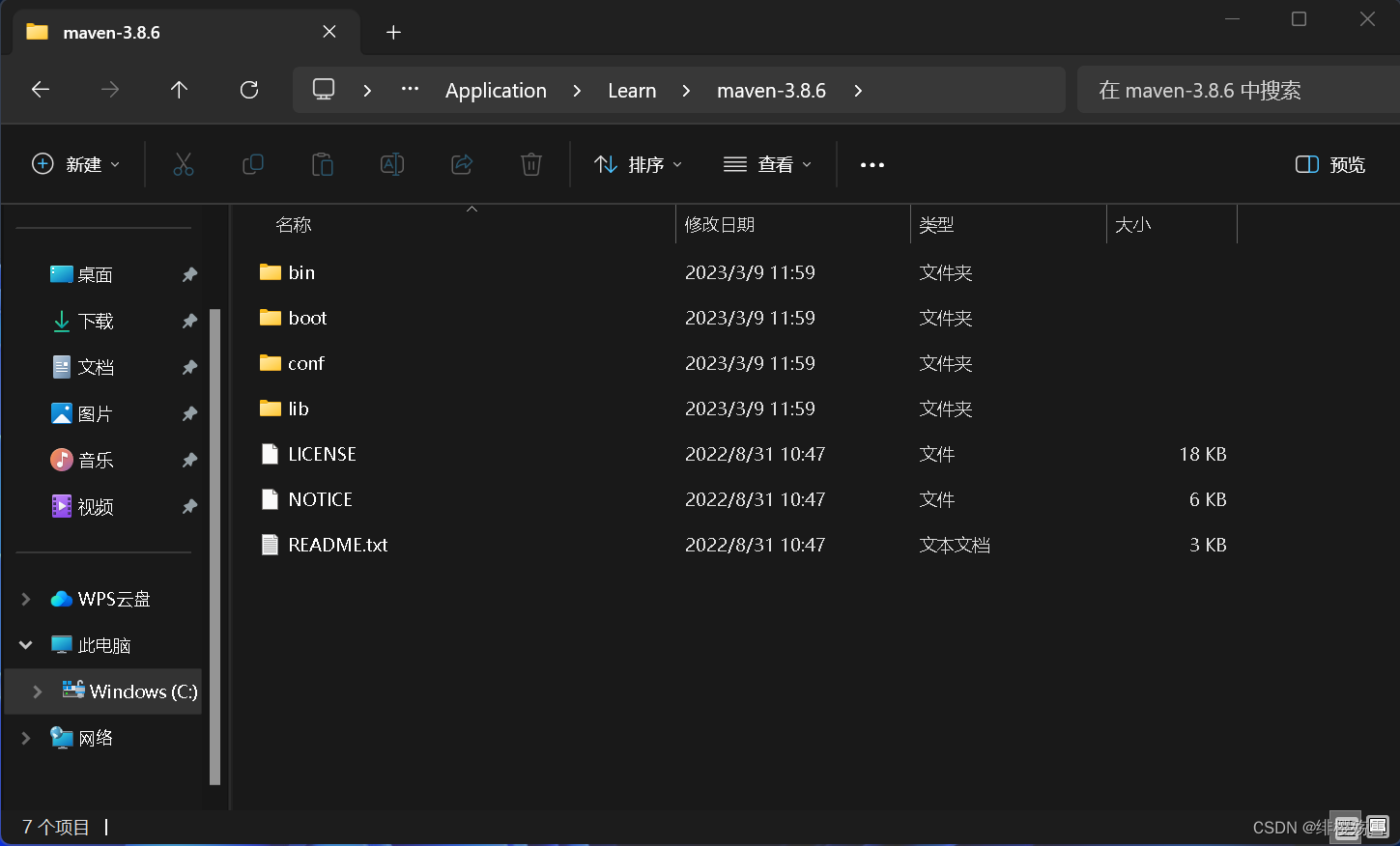
三、 配置
- 点击
我的电脑→ 右键 → 选择属性,点击高级系统设置,或者控制面板→系统和安全→系统也可以找到高级系统设置,或者快捷键Win + S,在输入框中输入env,回车即可。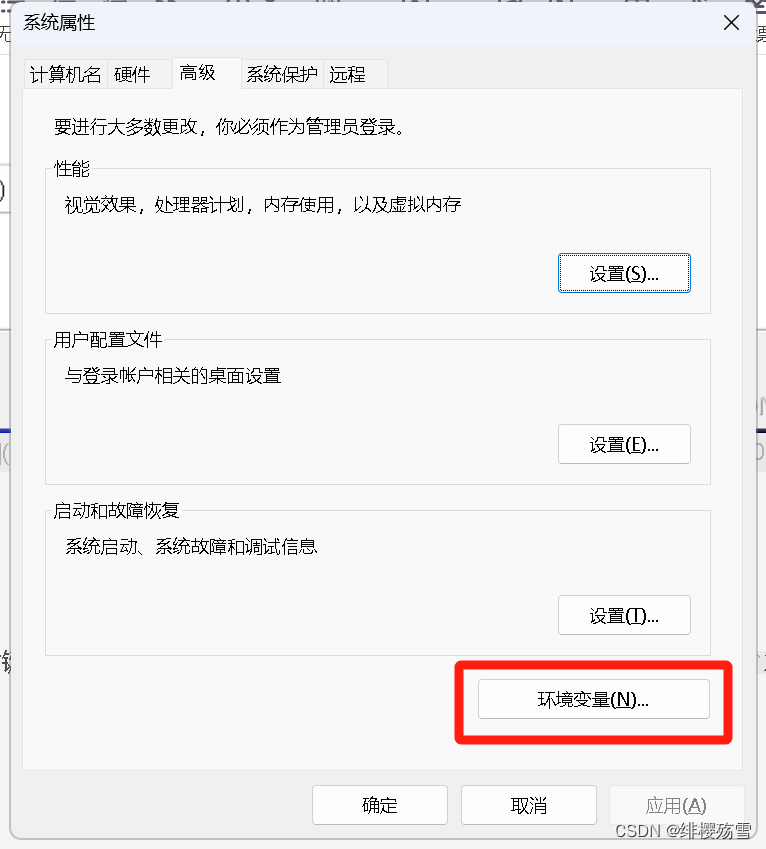
- 点击环境变量后,跳出如下图所示对话框,第一步点击 “新建”,随后跳出 “新建系统变量” 对话框,在弹出的 新建系统变量 对话框中的 变量名 填入
maven,变量值填入 :C:\Application\Learn\maven-3.8.6(安装 解压时 Maven 所在的文件夹),点击确定。

- 双击打开 Path,点击新建按钮,添加变量值:%MAVEN_HOME%\bin,点击
确定。

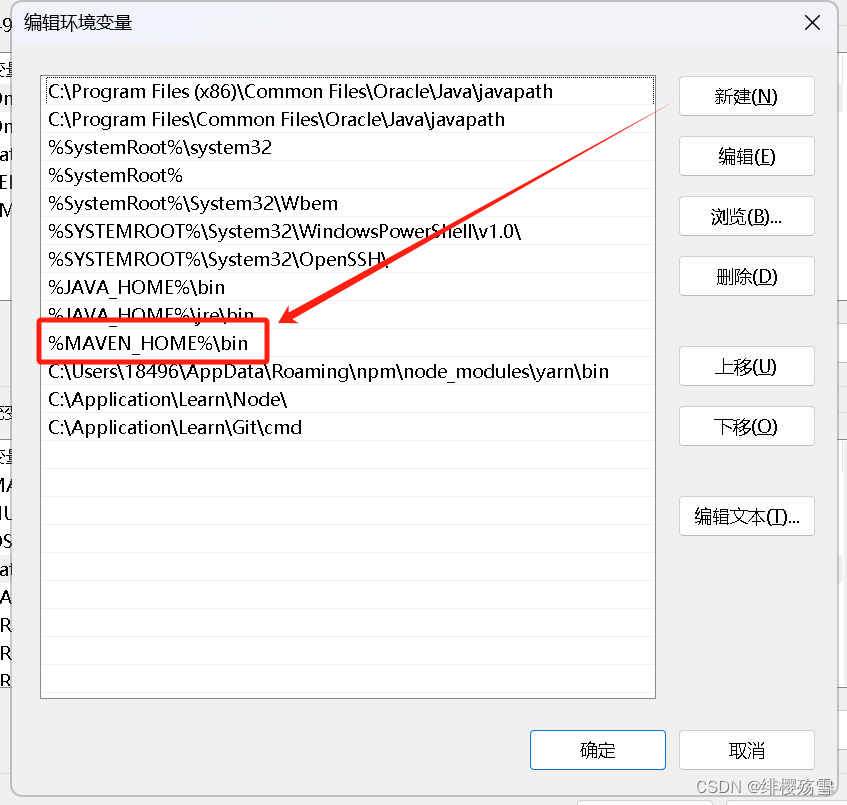
- 点击三次
确定返回,即可
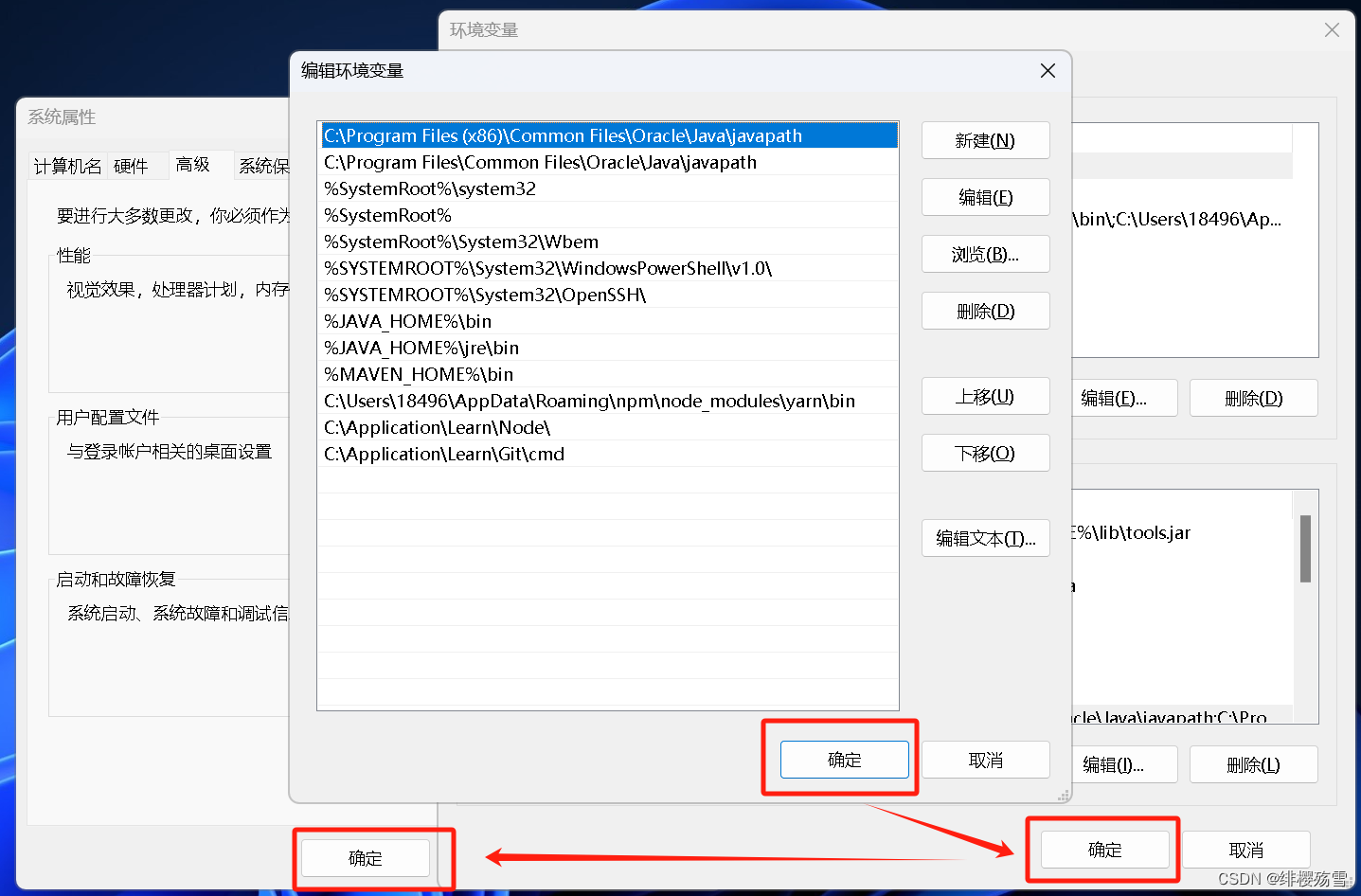
四、 验证
- 点击
Win+R,输入CMD进入命令提示符界面,输入mvn -v,假如出现如下界面则配置成功。
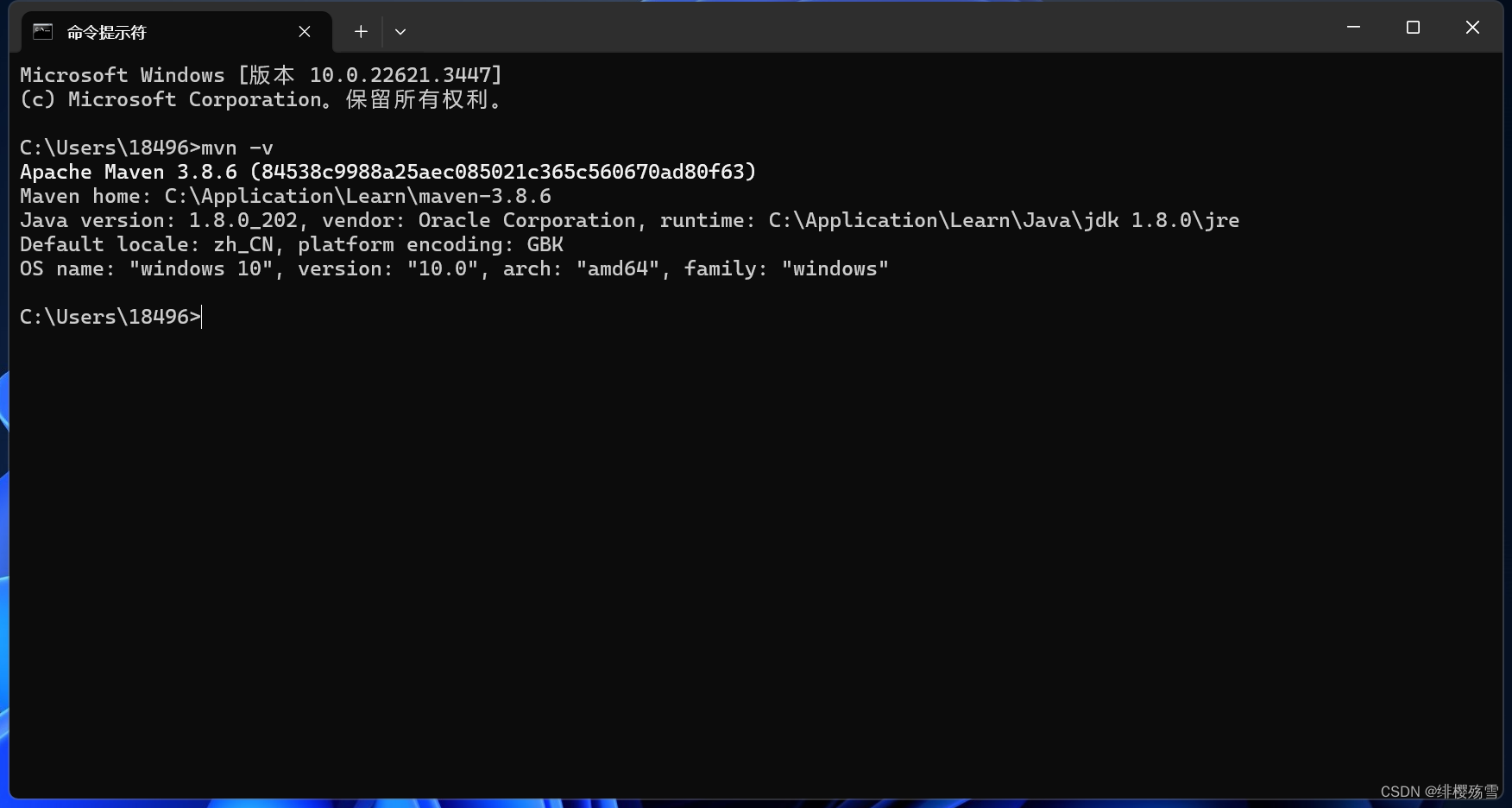
五、 本地仓储配置
- 在 Maven 解压目录下,新建一个文件夹:
repository(名字看个人喜欢),作为 Maven 的本地仓库
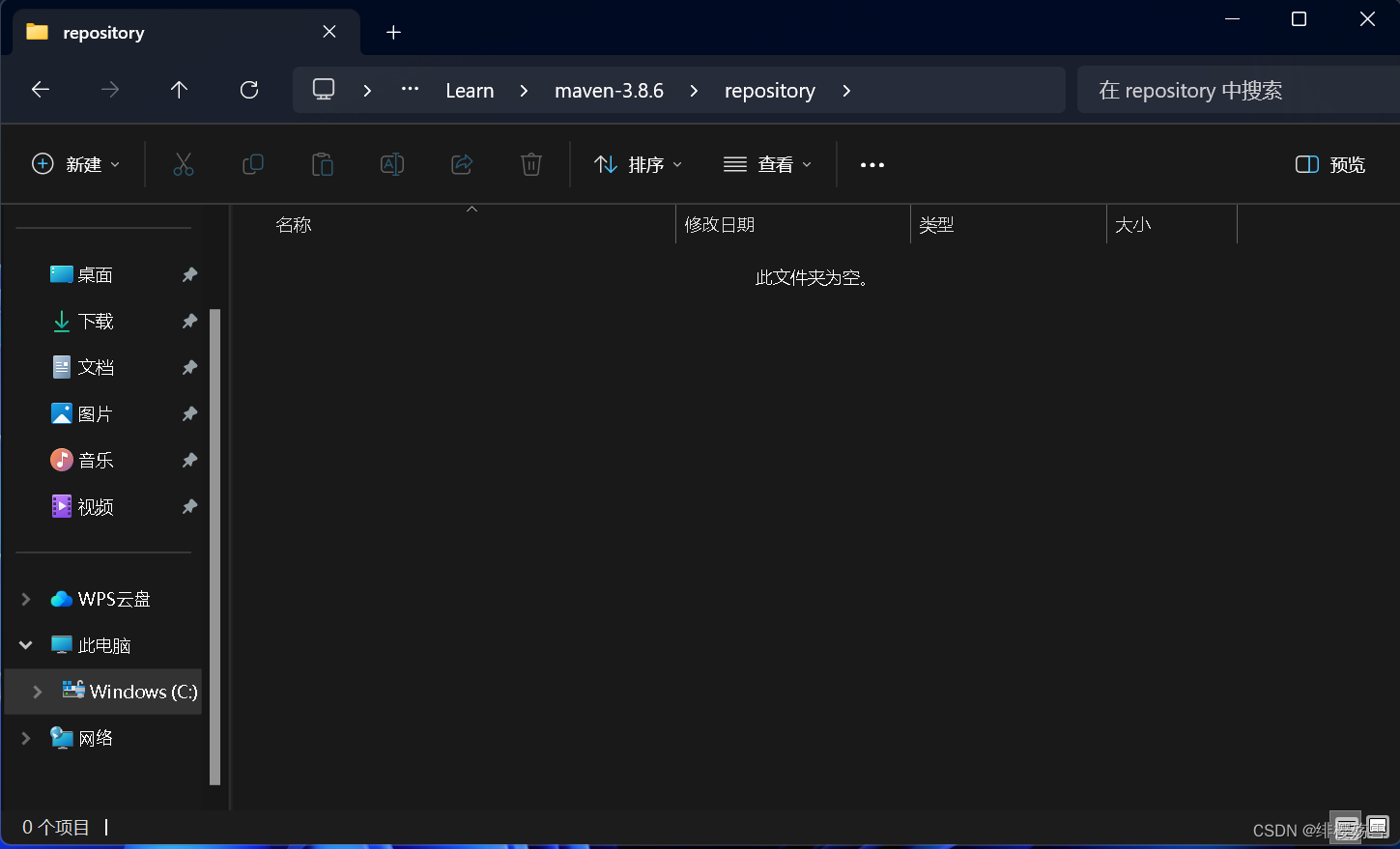
- 在 Maven 解压目录下打开
conf目录下的settings.xml文件
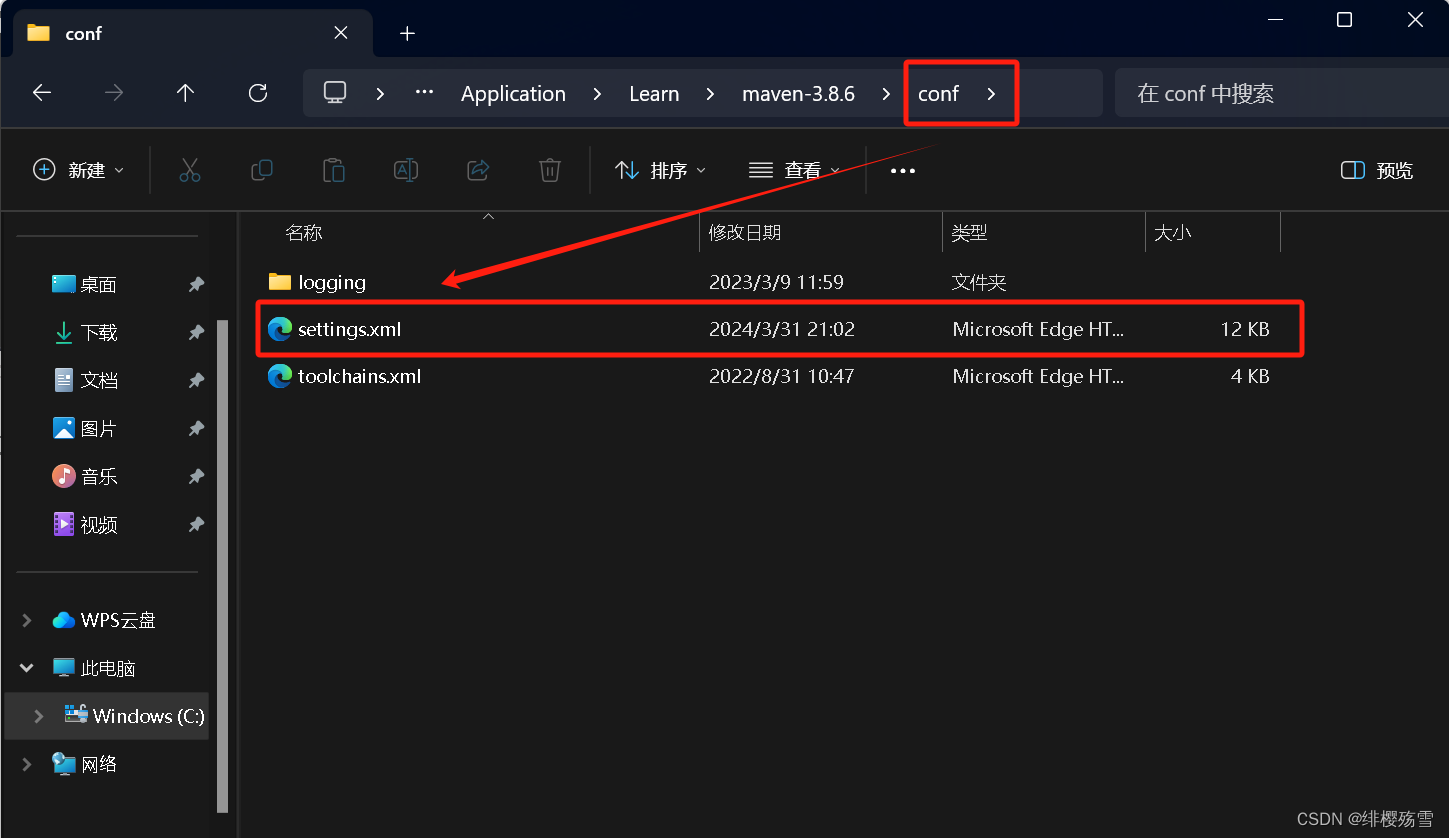
- 在
localRepository的注释标签下(大约在 55 行左右),添加下面这行语句以配置本地仓储位置,目录为刚刚添加的仓库文件路径
<localRepository>C:/Application/Learn/maven-3.8.6/repository</localRepository>
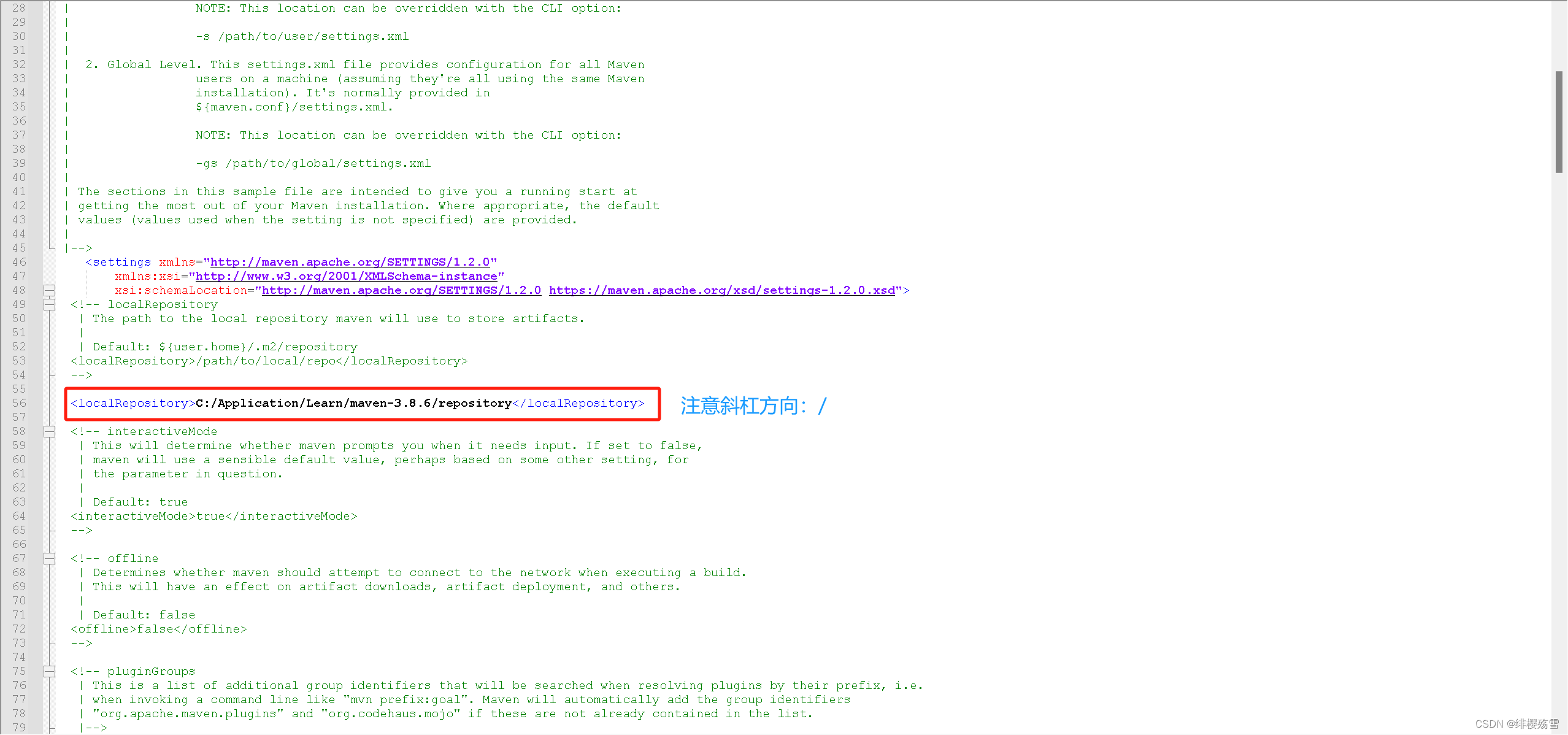
六、 配置镜像
- 在 Maven 解压目录下打开
conf目录下的settings.xml文件,找到mirrors节点(大约在 148 行左右),添加如下配置(注意要添加在<mirrors>和</mirrors>两个标签之间)
<!-- 阿里云仓库 --><mirror><id>nexus-aliyun</id><name>Nexus aliyun</name><mirrorOf>central</mirrorOf><url>http://maven.aliyun.com/nexus/content/repositories/central</url></mirror><!-- 华为云仓库 --><mirror><id>huaweicloud</id><name>huaweicloud maven</name><mirrorOf>central</mirrorOf><url>https://mirrors.huaweicloud.com/repository/maven/</url></mirror><!-- 中央仓库 --><mirror><id>repo</id><name>Human Readable Name for this Mirror.</name><mirrorOf>centra</mirrorOf><url>https://repo1.maven.org/maven2/</url></mirror>
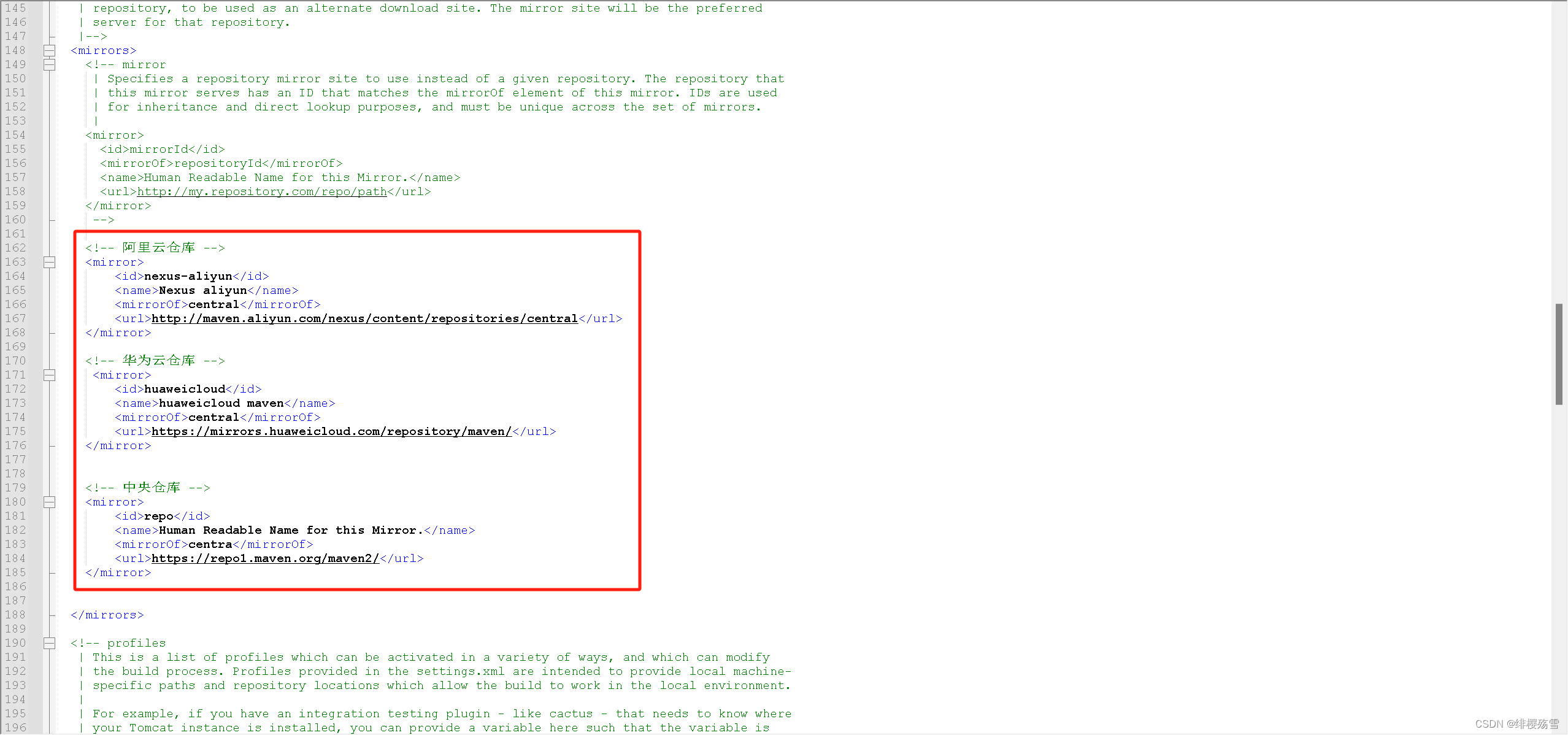
七、 配置JDK
- 在 Maven 解压目录下打开
conf目录下的settings.xml文件,找到profiles节点(大约在 210 行左右),添加如下配置(注意要添加在<profiles>和</profiles>两个标签之间)
<!-- java版本 --> <profile><id>jdk-17</id><activation><activeByDefault>true</activeByDefault><jdk>17</jdk></activation><properties><maven.compiler.source>17</maven.compiler.source><maven.compiler.target>17</maven.compiler.target><maven.compiler.compilerVersion>17</maven.compiler.compilerVersion></properties></profile>
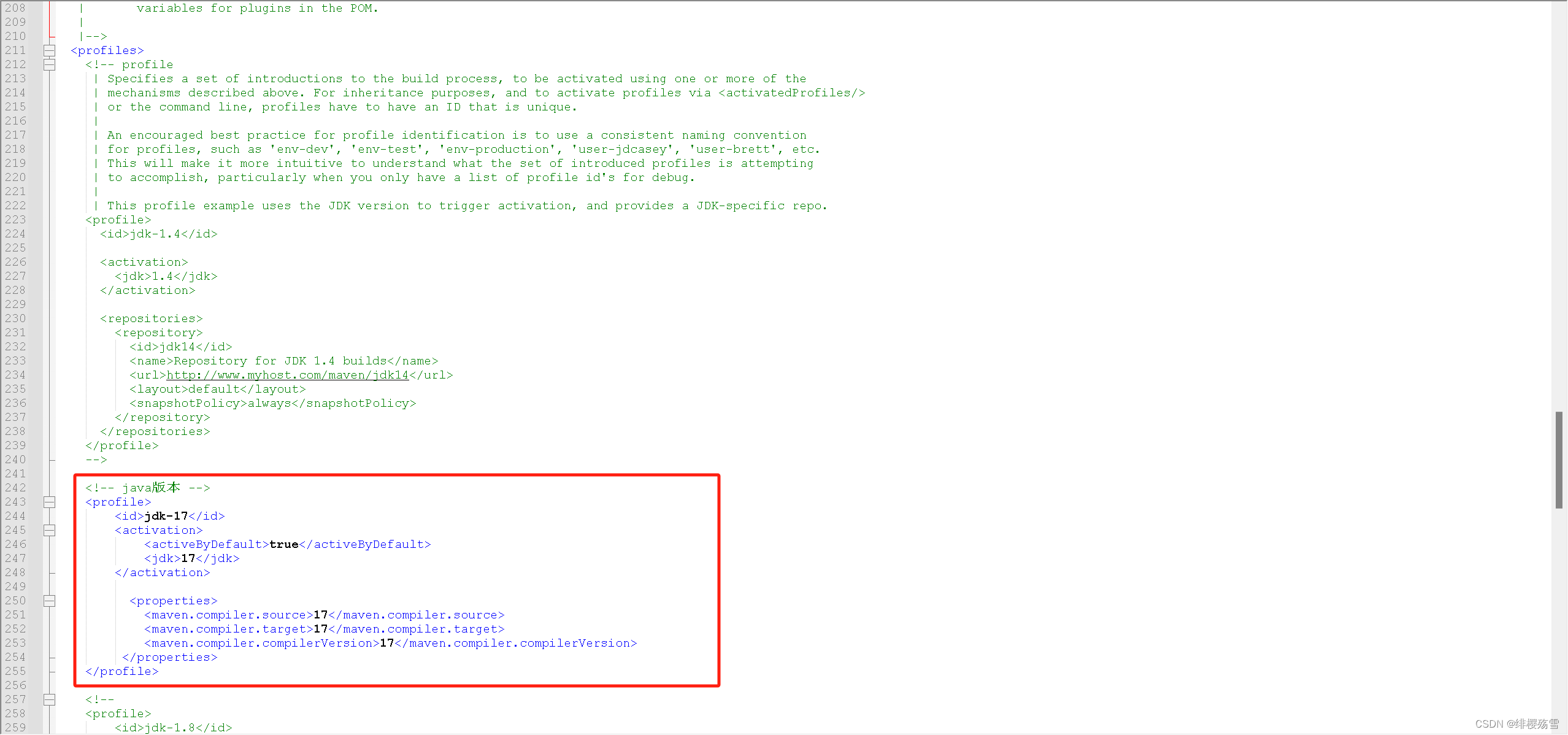
八、完整配置
<?xml version="1.0" encoding="UTF-8"?><!--
Licensed to the Apache Software Foundation (ASF) under one
or more contributor license agreements. See the NOTICE file
distributed with this work for additional information
regarding copyright ownership. The ASF licenses this file
to you under the Apache License, Version 2.0 (the
"License"); you may not use this file except in compliance
with the License. You may obtain a copy of the License athttp://www.apache.org/licenses/LICENSE-2.0Unless required by applicable law or agreed to in writing,
software distributed under the License is distributed on an
"AS IS" BASIS, WITHOUT WARRANTIES OR CONDITIONS OF ANY
KIND, either express or implied. See the License for the
specific language governing permissions and limitations
under the License.
--><!--| This is the configuration file for Maven. It can be specified at two levels:|| 1. User Level. This settings.xml file provides configuration for a single user,| and is normally provided in ${user.home}/.m2/settings.xml.|| NOTE: This location can be overridden with the CLI option:|| -s /path/to/user/settings.xml|| 2. Global Level. This settings.xml file provides configuration for all Maven| users on a machine (assuming they're all using the same Maven| installation). It's normally provided in| ${maven.conf}/settings.xml.|| NOTE: This location can be overridden with the CLI option:|| -gs /path/to/global/settings.xml|| The sections in this sample file are intended to give you a running start at| getting the most out of your Maven installation. Where appropriate, the default| values (values used when the setting is not specified) are provided.||--><settings xmlns="http://maven.apache.org/SETTINGS/1.2.0"xmlns:xsi="http://www.w3.org/2001/XMLSchema-instance"xsi:schemaLocation="http://maven.apache.org/SETTINGS/1.2.0 https://maven.apache.org/xsd/settings-1.2.0.xsd"><!-- localRepository| The path to the local repository maven will use to store artifacts.|| Default: ${user.home}/.m2/repository<localRepository>/path/to/local/repo</localRepository>--><localRepository>C:/Application/Learn/maven-3.8.6/repository</localRepository><!-- interactiveMode| This will determine whether maven prompts you when it needs input. If set to false,| maven will use a sensible default value, perhaps based on some other setting, for| the parameter in question.|| Default: true<interactiveMode>true</interactiveMode>--><!-- offline| Determines whether maven should attempt to connect to the network when executing a build.| This will have an effect on artifact downloads, artifact deployment, and others.|| Default: false<offline>false</offline>--><!-- pluginGroups| This is a list of additional group identifiers that will be searched when resolving plugins by their prefix, i.e.| when invoking a command line like "mvn prefix:goal". Maven will automatically add the group identifiers| "org.apache.maven.plugins" and "org.codehaus.mojo" if these are not already contained in the list.|--><pluginGroups><!-- pluginGroup| Specifies a further group identifier to use for plugin lookup.<pluginGroup>com.your.plugins</pluginGroup>--></pluginGroups><!-- proxies| This is a list of proxies which can be used on this machine to connect to the network.| Unless otherwise specified (by system property or command-line switch), the first proxy| specification in this list marked as active will be used.|--><proxies><!-- proxy| Specification for one proxy, to be used in connecting to the network.|<proxy><id>optional</id><active>true</active><protocol>http</protocol><username>proxyuser</username><password>proxypass</password><host>proxy.host.net</host><port>80</port><nonProxyHosts>local.net|some.host.com</nonProxyHosts></proxy>--></proxies><!-- servers| This is a list of authentication profiles, keyed by the server-id used within the system.| Authentication profiles can be used whenever maven must make a connection to a remote server.|--><servers><!-- server| Specifies the authentication information to use when connecting to a particular server, identified by| a unique name within the system (referred to by the 'id' attribute below).|| NOTE: You should either specify username/password OR privateKey/passphrase, since these pairings are| used together.|<server><id>deploymentRepo</id><username>repouser</username><password>repopwd</password></server>--><!-- Another sample, using keys to authenticate.<server><id>siteServer</id><privateKey>/path/to/private/key</privateKey><passphrase>optional; leave empty if not used.</passphrase></server>--></servers><!-- mirrors| This is a list of mirrors to be used in downloading artifacts from remote repositories.|| It works like this: a POM may declare a repository to use in resolving certain artifacts.| However, this repository may have problems with heavy traffic at times, so people have mirrored| it to several places.|| That repository definition will have a unique id, so we can create a mirror reference for that| repository, to be used as an alternate download site. The mirror site will be the preferred| server for that repository.|--><mirrors><!-- mirror| Specifies a repository mirror site to use instead of a given repository. The repository that| this mirror serves has an ID that matches the mirrorOf element of this mirror. IDs are used| for inheritance and direct lookup purposes, and must be unique across the set of mirrors.|<mirror><id>mirrorId</id><mirrorOf>repositoryId</mirrorOf><name>Human Readable Name for this Mirror.</name><url>http://my.repository.com/repo/path</url></mirror>--><!-- 阿里云仓库 --><mirror><id>nexus-aliyun</id><name>Nexus aliyun</name><mirrorOf>central</mirrorOf><url>http://maven.aliyun.com/nexus/content/repositories/central</url></mirror><!-- 华为云仓库 --><mirror><id>huaweicloud</id><name>huaweicloud maven</name><mirrorOf>central</mirrorOf><url>https://mirrors.huaweicloud.com/repository/maven/</url></mirror><!-- 中央仓库 --><mirror><id>repo</id><name>Human Readable Name for this Mirror.</name><mirrorOf>centra</mirrorOf><url>https://repo1.maven.org/maven2/</url></mirror></mirrors><!-- profiles| This is a list of profiles which can be activated in a variety of ways, and which can modify| the build process. Profiles provided in the settings.xml are intended to provide local machine-| specific paths and repository locations which allow the build to work in the local environment.|| For example, if you have an integration testing plugin - like cactus - that needs to know where| your Tomcat instance is installed, you can provide a variable here such that the variable is| dereferenced during the build process to configure the cactus plugin.|| As noted above, profiles can be activated in a variety of ways. One way - the activeProfiles| section of this document (settings.xml) - will be discussed later. Another way essentially| relies on the detection of a system property, either matching a particular value for the property,| or merely testing its existence. Profiles can also be activated by JDK version prefix, where a| value of '1.4' might activate a profile when the build is executed on a JDK version of '1.4.2_07'.| Finally, the list of active profiles can be specified directly from the command line.|| NOTE: For profiles defined in the settings.xml, you are restricted to specifying only artifact| repositories, plugin repositories, and free-form properties to be used as configuration| variables for plugins in the POM.||--><profiles><!-- profile| Specifies a set of introductions to the build process, to be activated using one or more of the| mechanisms described above. For inheritance purposes, and to activate profiles via <activatedProfiles/>| or the command line, profiles have to have an ID that is unique.|| An encouraged best practice for profile identification is to use a consistent naming convention| for profiles, such as 'env-dev', 'env-test', 'env-production', 'user-jdcasey', 'user-brett', etc.| This will make it more intuitive to understand what the set of introduced profiles is attempting| to accomplish, particularly when you only have a list of profile id's for debug.|| This profile example uses the JDK version to trigger activation, and provides a JDK-specific repo.<profile><id>jdk-1.4</id><activation><jdk>1.4</jdk></activation><repositories><repository><id>jdk14</id><name>Repository for JDK 1.4 builds</name><url>http://www.myhost.com/maven/jdk14</url><layout>default</layout><snapshotPolicy>always</snapshotPolicy></repository></repositories></profile>--><!-- java版本 --> <profile><id>jdk-17</id><activation><activeByDefault>true</activeByDefault><jdk>17</jdk></activation><properties><maven.compiler.source>17</maven.compiler.source><maven.compiler.target>17</maven.compiler.target><maven.compiler.compilerVersion>17</maven.compiler.compilerVersion></properties></profile><!--<profile><id>jdk-1.8</id><activation><activeByDefault>true</activeByDefault><jdk>1.8</jdk></activation><properties><maven.compiler.source>1.8</maven.compiler.source><maven.compiler.target>1.8</maven.compiler.target><maven.compiler.compilerVersion>1.8</maven.compiler.compilerVersion></properties></profile>--><!--| Here is another profile, activated by the system property 'target-env' with a value of 'dev',| which provides a specific path to the Tomcat instance. To use this, your plugin configuration| might hypothetically look like:|| ...| <plugin>| <groupId>org.myco.myplugins</groupId>| <artifactId>myplugin</artifactId>|| <configuration>| <tomcatLocation>${tomcatPath}</tomcatLocation>| </configuration>| </plugin>| ...|| NOTE: If you just wanted to inject this configuration whenever someone set 'target-env' to| anything, you could just leave off the <value/> inside the activation-property.|<profile><id>env-dev</id><activation><property><name>target-env</name><value>dev</value></property></activation><properties><tomcatPath>/path/to/tomcat/instance</tomcatPath></properties></profile>--></profiles><!-- activeProfiles| List of profiles that are active for all builds.|<activeProfiles><activeProfile>alwaysActiveProfile</activeProfile><activeProfile>anotherAlwaysActiveProfile</activeProfile></activeProfiles>-->
</settings>
九、常用命令
mvn package:打包命令,可以把项目打包成一个 jar,该命令会先执行 clean,test,compile,如果不想执行测试命令可以跳过
mvn package -Dmaven.test.skip=true
mvn compile:编译命令,可以重新编译源代码为字节码文件,如果有 jar 包没下载完成,这个命令会先把需要的 jar 包下载完成后再编译
mvn clean:清理命令,会把项目结构中的 target 文件夹中的字节码文件删除,可以组合
mvn clean compile
mvn test:测试命令会帮我们执行测试代码
mvn install:项目打包后安装到本地仓库
mvn source:jar:生成项目的源码包
mvn clean site:生成文档
十、IDEA 中配置 Maven
1. 配置当前项目
- 打开 IntelliJ IDEA(2023.3.6 版本),
File→Settings...
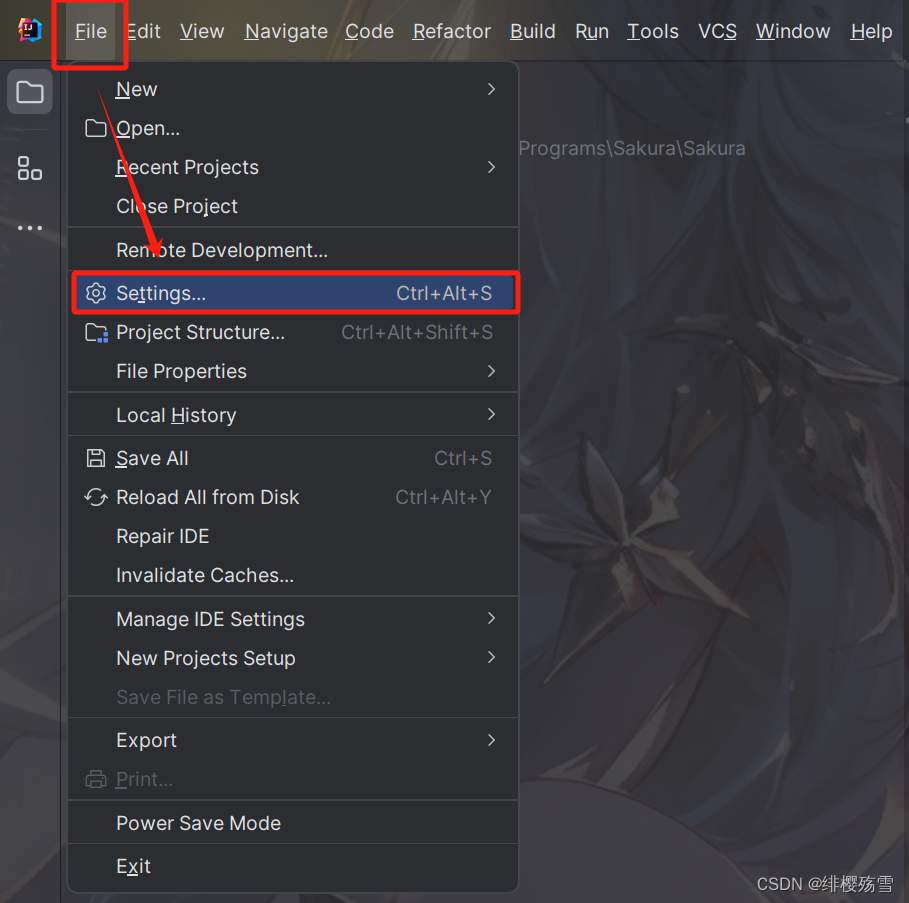
- 选择
Build, Execution, Deployment→Build Tools→Maven,进行配置,点击Apply→OK即可
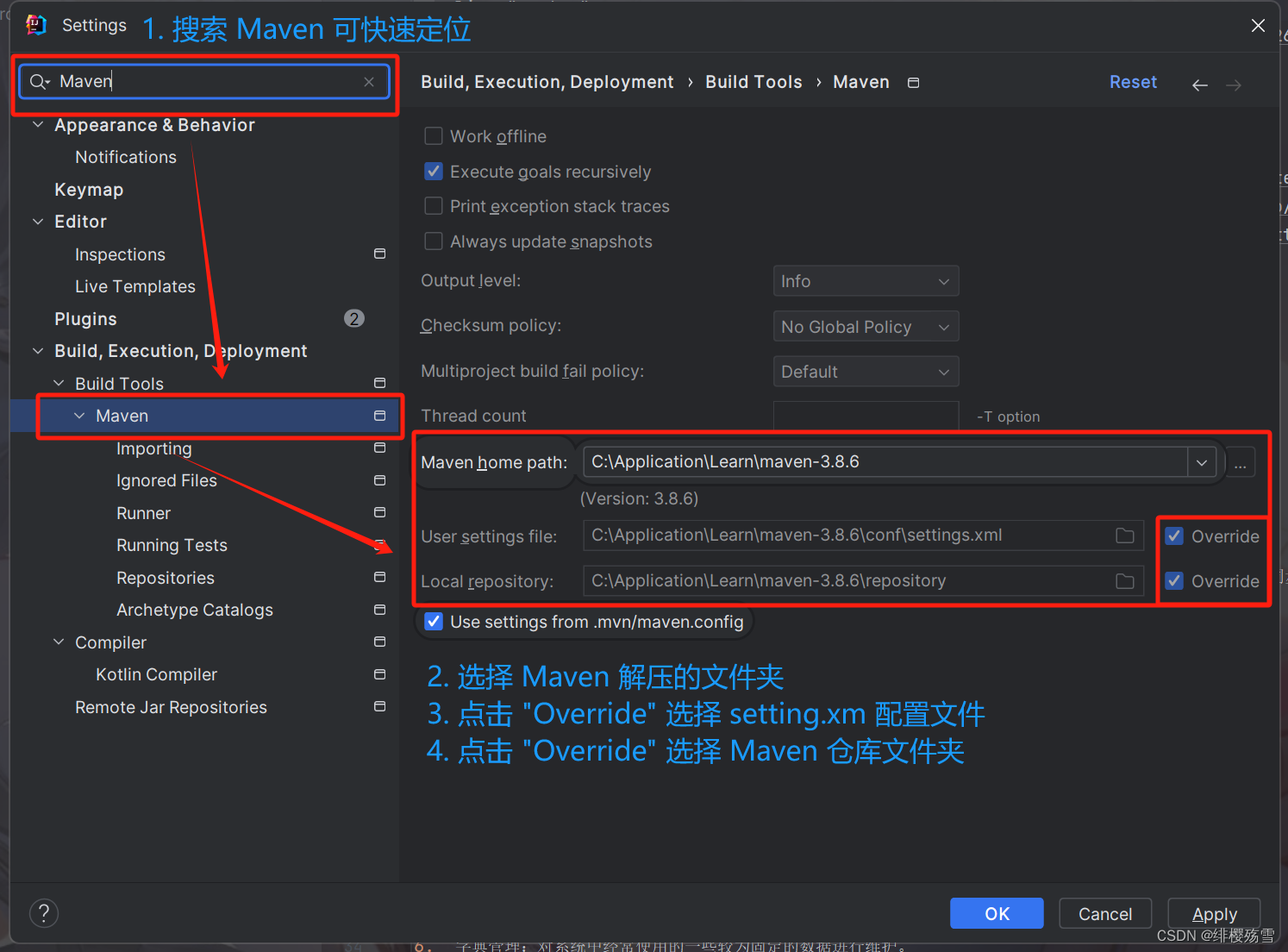
2. 配置新建 / 新打开 项目
- 打 IntelliJ IDEA(2023.3.6 版本),
File→New Projects Setup→Settings for New Projects...
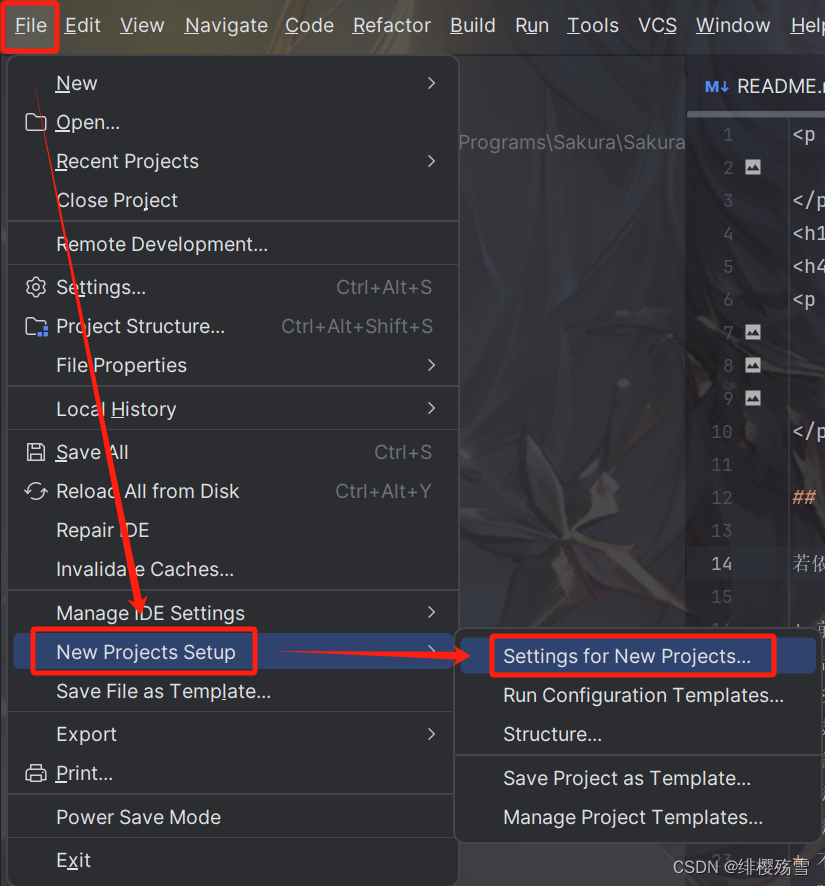
- 选择
Build, Execution, Deployment→Build Tools→Maven,进行配置,点击Apply→OK即可
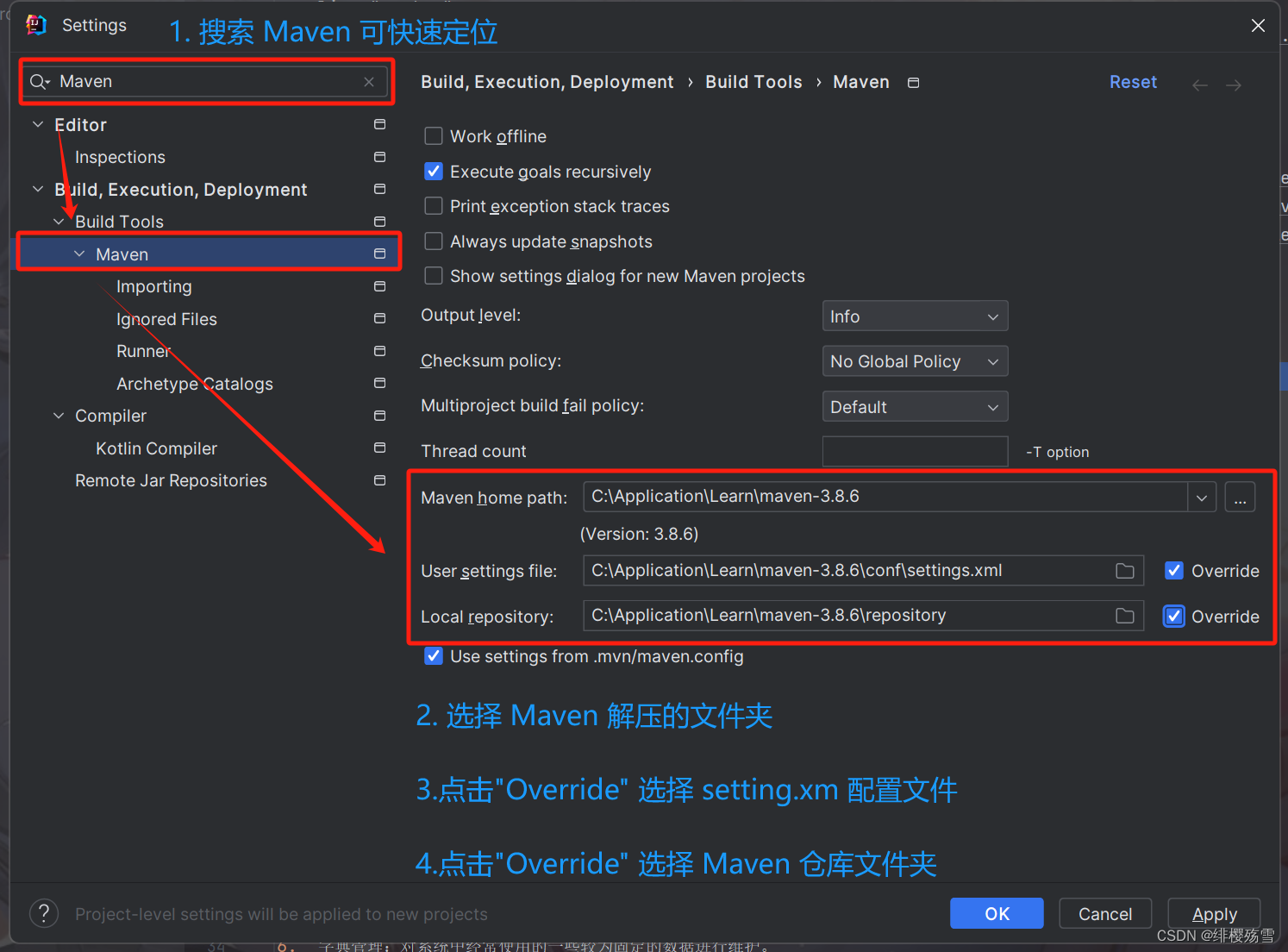

![【Hadoop】- MapReduce YARN 初体验[9]](http://pic.xiahunao.cn/【Hadoop】- MapReduce YARN 初体验[9])



)

)


)
)
)


)


)
